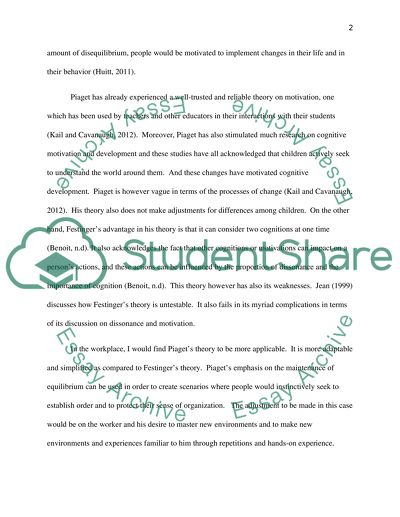Cite this document
(“Compare and contrast Piagets and Festingers cognitive theories of Essay”, n.d.)
Retrieved from https://studentshare.org/psychology/1395059-compare-and-contrast-piagets-and-festingers-cognitive-theories-of-motivation
Retrieved from https://studentshare.org/psychology/1395059-compare-and-contrast-piagets-and-festingers-cognitive-theories-of-motivation
(Compare and Contrast Piagets and Festingers Cognitive Theories of Essay)
https://studentshare.org/psychology/1395059-compare-and-contrast-piagets-and-festingers-cognitive-theories-of-motivation.
https://studentshare.org/psychology/1395059-compare-and-contrast-piagets-and-festingers-cognitive-theories-of-motivation.
“Compare and Contrast Piagets and Festingers Cognitive Theories of Essay”, n.d. https://studentshare.org/psychology/1395059-compare-and-contrast-piagets-and-festingers-cognitive-theories-of-motivation.


